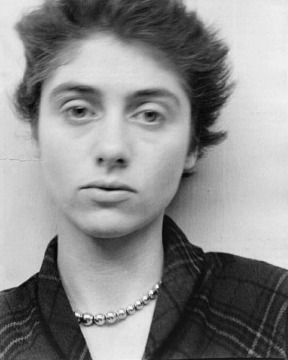
Diane Arbus was an American photographer. She photographed a wide range of subjects including strippers, carnival performers, nudists, people with dwarfism, children, mothers, couples, elderly people, and middle-class families. She photographed her subjects in familiar settings: their homes, on the street, in the workplace, in the park. "She is noted for expanding notions of acceptable subject matter and violates canons of the appropriate distance between photographer and subject. By befriending, not objectifying her subjects, she was able to capture in her work a rare psychological intensity." In his 2003 New York Times Magazine article, "Arbus Reconsidered", Arthur Lubow states, "She was fascinated by people who were visibly creating their own identities—cross-dressers, nudists, sideshow performers, tattooed men, the nouveaux riches, the movie-star fans—and by those who were trapped in a uniform that no longer provided any security or comfort." Michael Kimmelman writes in his review of the exhibition Diane Arbus Revelations, that her work "transformed the art of photography ". Arbus's imagery helped to normalize marginalized groups and highlight the importance of proper representation of all people.

Roland Gérard Barthes was a French literary theorist, essayist, philosopher, critic, and semiotician. His work engaged in the analysis of a variety of sign systems, mainly derived from Western popular culture. His ideas explored a diverse range of fields and influenced the development of many schools of theory, including structuralism, anthropology, literary theory, and post-structuralism.

Jean Baudrillard was a French sociologist, philosopher and poet, with interest in cultural studies. He is best known for his analyses of media, contemporary culture, and technological communication, as well as his formulation of concepts such as hyperreality. Baudrillard wrote about diverse subjects, including consumerism, critique of economy, social history, aesthetics, Western foreign policy, and popular culture. Among his most well-known works are Seduction (1978), Simulacra and Simulation (1981), America (1986), and The Gulf War Did Not Take Place (1991). His work is frequently associated with postmodernism and specifically post-structuralism. Nevertheless, Baudrillard had also opposed post-structuralism, and had distanced himself from postmodernism.
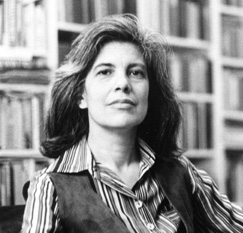
Susan Lee Sontag was an American writer, critic, and public intellectual. She mostly wrote essays, but also published novels; she published her first major work, the essay "Notes on 'Camp' ", in 1964. Her best-known works include the critical works Against Interpretation (1966), On Photography (1977), Illness as Metaphor (1978) and Regarding the Pain of Others, as well as the fictional works The Way We Live Now (1986), The Volcano Lover (1992), and In America (1999).

William Howard Gass was an American novelist, short story writer, essayist, critic, and philosophy professor. He wrote three novels, three collections of short stories, a collection of novellas, and seven volumes of essays, three of which won National Book Critics Circle Award prizes and one of which, A Temple of Texts (2006), won the Truman Capote Award for Literary Criticism. His 1995 novel The Tunnel received the American Book Award. His 2013 novel Middle C won the 2015 William Dean Howells Medal.

Against Interpretation is a 1966 collection of essays by Susan Sontag. It includes some of Sontag's best-known works, including "On Style," and the eponymous essay "Against Interpretation." In the latter, Sontag argues that the new approach to criticism and aesthetics neglects the sensuous impact and novelty of art, instead fitting works into predetermined intellectual interpretations and emphasis on the "content" or "meaning" of a work. The book was a finalist for the Arts and Letters category of the National Book Award.

Illness as Metaphor is a 1978 work of critical theory by Susan Sontag, in which she challenged the victim-blaming in the language that is often used to describe diseases and the people affected by them.

Laura Mulvey is a British feminist film theorist and filmmaker. She was educated at St Hilda's College, Oxford. She is currently professor of film and media studies at Birkbeck, University of London. She previously taught at Bulmershe College, the London College of Printing, the University of East Anglia, and the British Film Institute.
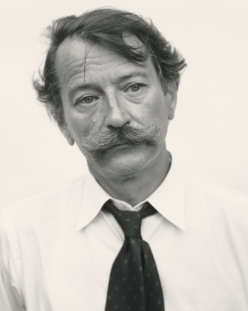
Thaddeus John Szarkowski was an American photographer, curator, historian, and critic. From 1962 to 1991 Szarkowski was the director of photography at New York's Museum of Modern Art (MoMA).

Under the Sign of Saturn is Susan Sontag's third collection of criticism, comprising seven essays. The collection was originally published in 1980. All of the essays were originally published, in a different or abridged form, in The New York Review of Books except for "Approaching Artaud," which was originally published in The New Yorker.

In America is a 1999 novel by Susan Sontag. It won the U.S. National Book Award for Fiction. It is based on the true story of Polish actress Helena Modjeska, her arrival in California in 1876, and her ascendancy to American stardom.
The Carabineers was the fifth narrative feature film by French filmmaker Jean-Luc Godard.

Regarding the Pain of Others is a 2003 book-length essay by Susan Sontag, which was nominated for the National Book Critics Circle Award. It was her last published book before her death in 2004. Sontag regarded the book as a sequel to her 1977 essay collection On Photography and reassessed some of the views she held in the latter. The essay is especially interested in war photography. Using photography as evidence for her opinions, Sontag sets out to answer one of the three questions posed in Virginia Woolf's book Three Guineas, "How in your opinion are we to prevent war?"
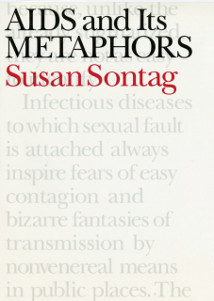
AIDS and Its Metaphors is a 1989 work of critical theory by Susan Sontag. In this companion book to her Illness as Metaphor (1978), Sontag extends her arguments about the metaphors attributed to cancer to the AIDS crisis. Sontag explores how attitudes to disease are formed in society, and attempts to deconstruct them.

Where the Stress Falls, published in 2001, is the last collection of essays published by Susan Sontag before her death in 2004. The essays vary between her experiences in the theater to book reviews.
Truth claim, in photography, is a term Tom Gunning uses to describe the prevalent belief that traditional photographs accurately depict reality. He states that the truth claim relies on both the indexicality and visual accuracy of photographs.

The People of Kau is the title of the 1976 English-language translation of German film director Leni Riefenstahl's Die Nuba von Kau, an illustrated book, published in the same year in Germany. The book is a follow-up to her earlier successful 1973 photo book Die Nuba.
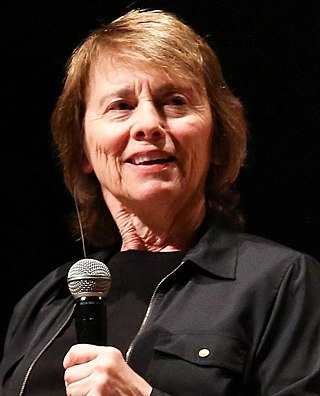
Camille Anna Paglia is an American academic, social critic and feminist. Paglia has been a professor at the University of the Arts in Philadelphia, Pennsylvania, since 1984. She is critical of many aspects of modern culture and is the author of Sexual Personae: Art and Decadence from Nefertiti to Emily Dickinson (1990) and other books. She is also a critic of contemporary American feminism and of post-structuralism, as well as a commentator on multiple aspects of American culture such as its visual art, music, and film history.
Light Vision was a bi-monthly Australian photography magazine that existed between 1977 and 1978.
Sophie Hackett is the curator of photography at the Art Gallery of Ontario, Toronto.
















